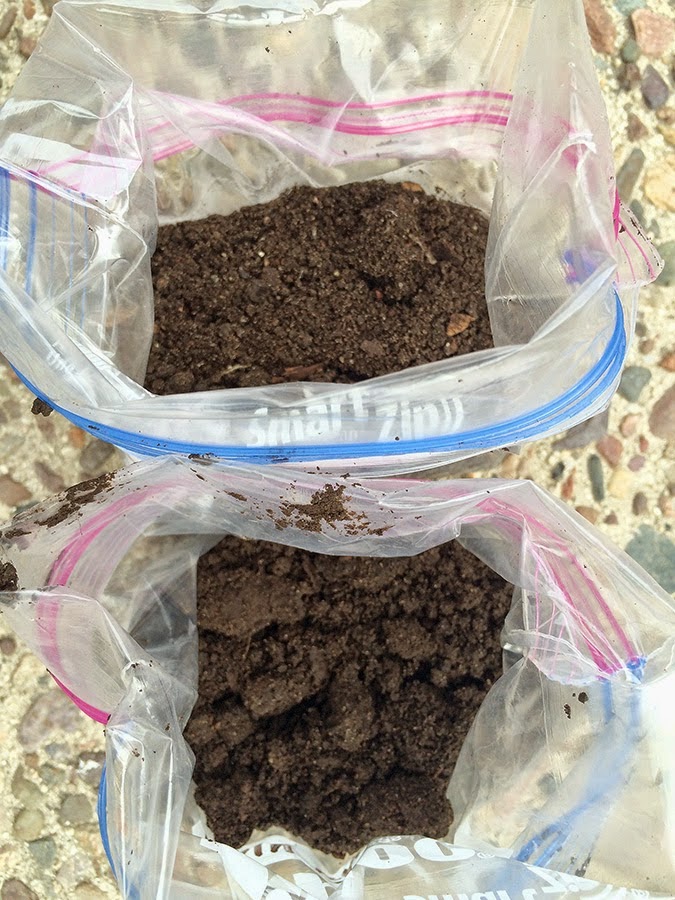One of the reasons I wanted to test the skinny garden alongside the house is because I feel like plants just aren’t flourishing there like they should be. I plan to renovate that whole bed this spring, pulling out almost everything and starting mostly from scratch, but before I invest the time and money in doing that I wanted to make sure there’s nothing odd going on there, like something leaching from the foundation into the soil.
Here are the results from that bed.
So what does it all mean? Let’s break it down.
The levels of nitrogen, phosphate and potassium are not a big surprise. You can’t really accurately measure nitrogen levels outside of the growing season and since nitrogen levels change constantly as it is being used by plants or becomes tied up in organic matter, it can be difficult to really know what’s going on with nitrogen. Most gardens can use some supplemental nitrogen at the right time of the year. It’s not a good idea to add nitrogen early in the year when you need plants to concentrate energy into root growth or at the end of the season, when a flush of leafy growth may not harden off in time to deal with winter.
Most gardens also have adequate levels of potassium and phosphorus and you can see that the levels are off the charts in this section of mine.
The organic matter level is at 7.6%, which is pretty good (you don’t want this number to get above 10% and it’s important to remember that the more organic matter, the more it ties up nitrogen in breaking it down).
But the number to look at is the pH; the one number I thought I had a good handle on before doing this test. At 7.5, my soil pH is definitely higher than I thought it was (I was under the impression that it was more in the 7.2 range). A pH of 7 is neutral. Anything below that is considered acidic, anything above it is alkaline. And while a lot of plants can handle a range of pH, 7.5 is definitely at the high end for where plants will thrive.
For instance, I continue to attempt to grow a climbing rose in this bed and although they grow, they don’t thrive like they should given that it is nearly perfect conditions for them. The last few years they’ve also suffered from aphid attacks, which is in my opinion a sign of a less-than-healthy plant. The optimum pH for roses is 6.5.
The other problem with high pH soils is that they can make it difficult for plants to use micronutrients in the soil. One of the recommendations in the report addresses this. “Some ornamentals such as roses may show yellowing (chlorosis) from iron and/or manganese deficiency at high soil pH. Treat problems related to micronutrient deficiency when soil pH is above optimum with foliar spray containing iron and manganese 1 to 2 times during the growing season.”
The results of the main garden test showed similar results.
The pH is just a touch lower and the organic matter just a touch higher. I’ve been having a few issues with cholorosis on my large Limelight hydrangea in this bed and I now think that’s due to it needing some micronutrients because of the high pH.
 |
| There is a difference in texture between the soil sample from the skinny garden, top, and the main garden, bottom. |
There’s more to soil than just numbers of course. Another helpful test I could do at home would be to do the soil-in-a-jar test that most of us probably did in school to determine texture and composition. Fine Gardening has information on how to do a more elaborate version of this test. Just from looking at my soil samples it was clear to me that when I rejuvenate the skinny bed I need to work on creating a more moisture retentive soil.
So what’s the bottom line here?
What would you like to know? Search, or jump to categories below.
2 Responses
Before growing anything such as gardening, farming and cultivating we must go for soil test; either the soil is suitable for gardening and other substances or not. The nutritious value present in the soil will decide the growth of plants and crops; therefore we should go for soil test before any farming and gardening.
Wow! You've got me thinking I need to do this after all. I have no idea what the ph level is in my garden and I'll bet you that my organic matter is way too high as we dump a lot of compost on it every spring.